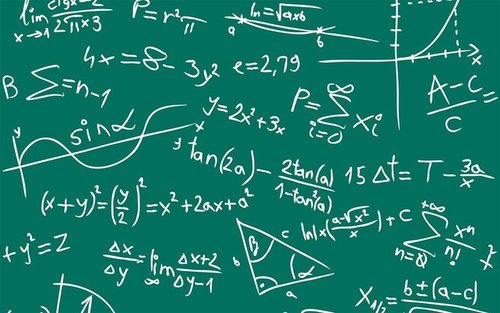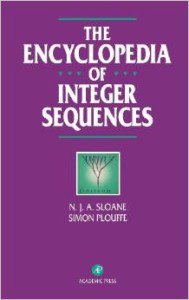
08/30/2015

Can you figure out the next term in each of the following sequences? Answers at the end.
A. 0, 1, 1, 2, 3, 5, 8, …
B. 1, 7, 11, 27, 77, 111, 127, …
C. 50, 40, 27, 36, …
D. 3, 4, 7, 29, …
Wired magazine last week offered a belated celebration of the 50th anniversary of the Encyclopedia of Integer Sequences, which started out as a book — I still have my 1995 edition — but nowadays of course is the On-Line Enyclopedia of Integer Sequences. Mathematician Neil Sloane got the ball rolling in 1964.
I have an entry in the OEIS: see "LINKS" here.
Not quite in the same league as having a theorem named after one, or having a poem in the Oxford Book of English Verse, but at this point I'll take what I can get.
Answers:
A. The Fibonacci sequence: each number is the sum of the two previous.
B. 177. The smallest whole number that needs n syllables to pronounce it in American English, for n = 1, 2, 3, …
C. 34. Number of chapters in the n-th book of the Bible (KJV) for n = 1, 2, 3, …
D. 20035299304068464649 … (19,689 digits omitted here) … 45587895905719156733. Values of Ackerman’s function A(n,2) for n = 0, 1, 2, 3, … Just screwin' with ya.
This is a content archive of VDARE.com, which Letitia James forced off of the Internet using lawfare.